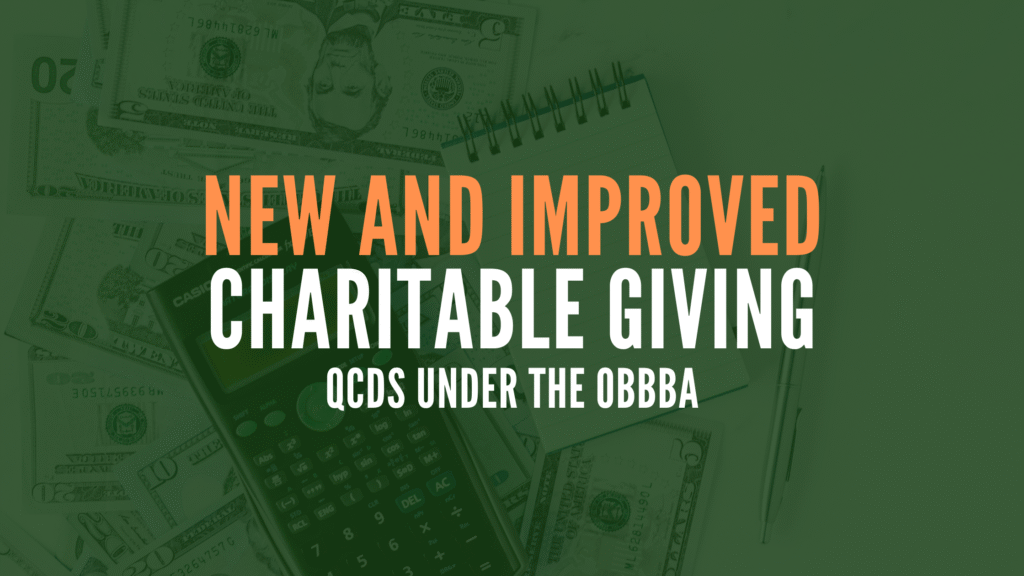If you’re age 70½ or older, there’s a smart, tax-efficient way to support the causes you care about and it just got even better under the One Big Beautiful Bill Act (OBBBA). The IRS allows certain retirement savers to make Qualified Charitable Distributions (QCDs) directly from their IRAs to approved organizations such as churches, educational institutions, and nonprofits. With the OBBBA’s latest updates, these transfers are now even more attractive to charitably minded retirees.
How Qualified Charitable Distributions Work
A QCD lets you transfer money directly from your IRA trustee to a qualified charity, bypassing your personal bank account entirely. Because the funds never enter your hands, the amount transferred is excluded from your taxable income.
This feature makes QCDs one of the few ways to remove income from your tax picture without needing to itemize deductions. Even if you claim the standard deduction, you still reap the tax advantage. For many retirees, keeping income lower can have a ripple effect potentially reducing Medicare premiums, preventing higher tax brackets, and preserving eligibility for valuable deductions or credits.
For 2025, the annual QCD limit rises to $108,000 per person. Married couples with their own IRAs can each make separate transfers up to this amount, allowing a potential combined contribution of $216,000 per year. This offers a significant opportunity to both give generously and manage taxable income strategically.
Why QCDs Are More Valuable Than Ever
QCDs have always been a powerful tax tool, but the OBBBA enhances their importance by introducing new limitations on charitable deductions beginning in 2026. Here’s why retirees should take note:
Lower taxable income – Regular IRA withdrawals increase your adjusted gross income (AGI), which can push you into a higher tax bracket. QCDs avoid this issue entirely, keeping your AGI low.
Bypass OBBBA deduction restrictions – Starting in 2026, charitable contributions will face new income-based limits and floors, reducing how much high-income taxpayers can deduct. QCDs, however, remain fully exempt from these restrictions.
Satisfy RMD requirements tax-free – If you’re age 73 or older, QCDs can count toward your required minimum distributions (RMDs), allowing you to fulfill IRS withdrawal requirements without adding to your taxable income.
Preserve other tax benefits – Because QCDs lower your reportable income, they can help you avoid Medicare premium surcharges, the 3.8% net investment income tax, and phaseouts for deductions like those for state and local taxes.
Estate planning advantage – Making charitable gifts through QCDs can help reduce the size of your taxable estate, which may lower future estate tax liability. Plus, it allows you to make meaningful contributions while you’re still alive to see their impact.
If you’ve reached age 70½ and are looking for a way to combine philanthropy with financial wisdom, Qualified Charitable Distributions deserve a spot at the top of your giving strategy. They’re clean, efficient, and incredibly effective at keeping your taxable income in check.
The OBBBA reinforces QCDs as a preferred giving method, especially as new limits on charitable deductions begin to take effect. Whether you’re donating to your local community, faith organization, or a cause you’re passionate about, this approach helps you give more meaningfully while keeping more of your retirement income tax-free.
In short, QCDs turn generosity into one of the smartest financial decisions you can make a win-win for you and the causes you care about most.

